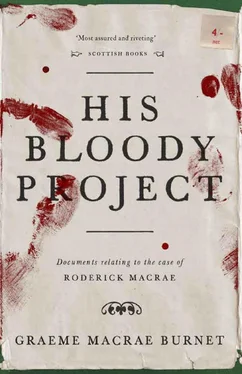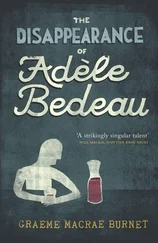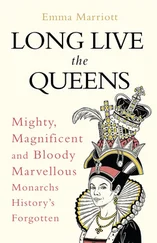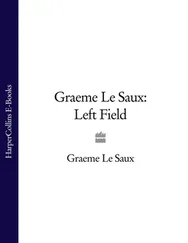Graeme Burnet - His Bloody Project
Здесь есть возможность читать онлайн «Graeme Burnet - His Bloody Project» весь текст электронной книги совершенно бесплатно (целиком полную версию без сокращений). В некоторых случаях можно слушать аудио, скачать через торрент в формате fb2 и присутствует краткое содержание. Год выпуска: 2015, Издательство: Contraband, Жанр: Современная проза, на английском языке. Описание произведения, (предисловие) а так же отзывы посетителей доступны на портале библиотеки ЛибКат.
- Название:His Bloody Project
- Автор:
- Издательство:Contraband
- Жанр:
- Год:2015
- ISBN:нет данных
- Рейтинг книги:5 / 5. Голосов: 1
-
Избранное:Добавить в избранное
- Отзывы:
-
Ваша оценка:
- 100
- 1
- 2
- 3
- 4
- 5
His Bloody Project: краткое содержание, описание и аннотация
Предлагаем к чтению аннотацию, описание, краткое содержание или предисловие (зависит от того, что написал сам автор книги «His Bloody Project»). Если вы не нашли необходимую информацию о книге — напишите в комментариях, мы постараемся отыскать её.
A brutal triple murder in a remote northwestern crofting community in 1869 leads to the arrest of a young man by the name of Roderick Macrae. There’s no question that Macrae is guilty, but the police and courts must uncover what drove him to murder the local village constable.
And who were the other two victims? Ultimately, Macrae’s fate hinges on one key question: is he insane?
His Bloody Project — читать онлайн бесплатно полную книгу (весь текст) целиком
Ниже представлен текст книги, разбитый по страницам. Система сохранения места последней прочитанной страницы, позволяет с удобством читать онлайн бесплатно книгу «His Bloody Project», без необходимости каждый раз заново искать на чём Вы остановились. Поставьте закладку, и сможете в любой момент перейти на страницу, на которой закончили чтение.
Интервал:
Закладка:
On the outer part of the right forearm was a large bruise six inches below the elbow. The palms of both hands bore a number of minor lacerations and were penetrated by a number of splinters of wood. The fourth finger of the left hand was broken.
On no other part of the body was to be seen any appearance of injury.
We are decidedly of the opinion that the blow or blows delivered to the back of the skull were sufficient to cause instantaneous death and were the cause of death.
Attested upon soul and conscience,
Charles MacLennan, M.D.
J.D. Gilchrist
* * *
Applecross, August 12th 1869
At the request of William Shaw esq., sheriff, and John Adam esq., Procurator Fiscal, we this day examined the body of Flora Mackenzie, aged fifteen years, daughter of Lachlan Mackenzie, and resident of Culduie, Ross-shire. The body was shewn to us in the outbuilding of Mr Kenneth Murchison, to which it had been removed from the place of death. The body was laid out on a stretcher and covered with funeral cloths.
The back of the skull was entirely caved in and fragments of bone had deeply penetrated the soft tissue. The hair was matted with a great deal of hardened blood. The features of the face were intact and it is our opinion that the damage to the skull was caused by a single blow of a heavy object or tool wielded with great force.
We observed a number of lacerations and bruising to the pubic region. The soft outer parts had been quite pulverised and the pubic bone was broken on the left side.
The left leg was fractured at the knee and the outer part of the knee severely bruised. This injury we judged to have been caused by a heavy blow, from an object consistent with the flaughter shewn to us, and would have rendered the victim unable to walk.
On no other part of the body was to be seen any appearance of injury.
We are decidedly of the opinion that the blow to the back of the skull was the cause of death, though whether instantaneous or not we could not say.
Attested upon soul and conscience,
Charles MacLennan, M.D.
J.D. Gilchrist
* * *
Applecross, August 12th 1869
At the request of William Shaw esq., sheriff, and John Adam esq., Procurator Fiscal, we this day examined the body of Donald Mackenzie, aged three years, son of Lachlan Mackenzie, and resident of Culduie, Ross-shire. The body was shewn to us in the outbuilding of Mr Kenneth Murchison, to which it had been removed from the place of death. The body was laid out on a cot and covered with funeral cloths.
A large bruise, from the front temple to the ear, was observed on the skull. The skull had in these parts collapsed inwards, though the bone had not fragmented. The skin was broken around the borders of the bruised area and some blood had seeped out and hardened.
On no other part of the body was to be seen any appearance of injury.
The injury to the skull was most likely caused by a blow from a heavy blunt object consistent with the flaughter shewn to us, though not wielded with such force as with the injuries noted to Lachlan Mackenzie and Flora Mackenzie. However, such an injury might also have been caused by a heavy fall on a hard surface. We are decidedly of the opinion that this injury was the cause of death, but as to the agency of this injury we can only conjecture.
Attested upon soul and conscience,
Charles MacLennan, M.D.
J.D. Gilchrist
Extract from Travels in the Border-lands of Lunacy by J. Bruce Thomson
TRAVELS
in the
BORDER-LANDS
of
LUNACY
by J. Bruce Thomson
James Bruce Thomson (1810–1873) was Resident Surgeon at the General Prison for Scotland in Perth. In this capacity he examined around 6,000 prisoners and was an acknowledged authority in the then nascent discipline of Criminal Anthropology. In 1870, he published two influential articles, ‘The Psychology of Criminals: A Study’ and ‘The Hereditary Nature of Crime’, in The Journal of Mental Science. His memoir Travels in the Border-Lands of Lunacy was published posthumously in 1874.
~ ~ ~
I arrived in Inverness on the 23rd day of August 1869, and spent the night at an inn where I was met by Mr Andrew Sinclair, advocate to a young crofter accused of murdering three of his neighbours. Mr Sinclair had written to me expressing his desire to have my opinion, as the country’s pre-eminent authority on such matters, as to the sanity or otherwise of his client. We are none of us entirely immune to such appeals to our vanity and, as the case had several interesting features, not least the alleged intelligence of the perpetrator, I consented and travelled from Perth as soon as my duties permitted.
From the beginning I found Mr Sinclair not to be a man of the highest calibre, which was hardly unexpected given the limited opportunities for educated discourse in a backwater such as Inverness. He was entirely unversed in current thinking in the field of Criminal Anthropology and I spent much of the evening outlining to him some of my continental colleagues’ recent innovations in this discipline. Naturally, he was anxious to discuss his client, but I bound him to silence, wishing to reach my own conclusions unencumbered by prejudicial thoughts, no matter how ill informed.
The following morning I accompanied Mr Sinclair to Inverness gaol to inspect the prisoner, and I again directed the advocate not to speak of his client before I had the opportunity to examine him. Mr Sinclair preceded me into the cell, in order, he said, to ascertain whether his client was willing to receive me. I found this a most irregular occurrence as I have never before heard of a prisoner being consulted about who may or may not enter his cell, but I attributed it to the advocate’s lack of experience in dealing with cases of this nature. Mr Sinclair remained some minutes inside the cell before informing the gaoler that I might be admitted. From the first instance, I found the relations between advocate and client to be quite unorthodox. They conversed together, not as a professional man and a criminal, but rather in the manner of two acquaintances somehow in cahoots. Nevertheless, the dialogue between them provided me with an opportunity to observe the prisoner before commencing my examination proper.
My initial impression of R— M— was not entirely negative. In his general bearing, he was certainly of low physical stock, but he was not as repellent in his features as the majority of the criminal class, perhaps on account of not breathing the rank air of his urban brethren. His complexion, however, was pallid, and his eyes, while alert, were close-set and capped by thick eyebrows. His beard grew sparsely, although this may have been due to his relative youth, rather than any hereditary deficiency. In his discourse with Mr Sinclair, he appeared quite lucid, but I noted that the advocate’s questions were frequently of a leading nature, requiring the prisoner only to offer confirmation of what had been suggested to him.
I dismissed the advocate and in the presence of the gaoler directed the prisoner to remove his clothes. This he did without protest. He stood before me quite without shame, and I commenced a detailed examination of his person. He stood 5 feet 4½ inches tall, and was of smaller than average build. His chest was disproportionately protruding — what in layman’s terms would be called ‘pigeon-chested’ — and his arms longer than average. The upper- and forearms were well developed, no doubt as a result of his life of physical labour. The hands were large and calloused, with exceptionally long fingers, but there was no evidence of webbing or other abnormalities. His torso was hirsute from the nipples to the pubis, but he was quite hairless on the back and shoulders. His penis was large, though within the normal range of dimensions, and the testicles properly descended. His legs were scrawny, and when asked to walk the length of the cell (admittedly not a great distance) his gait appeared somewhat rolling or lop-sided, suggesting an asymmetry in his bearing. This may have been due to some injury sustained at an earlier time, but when asked, the prisoner was unable to furnish me with any explanation.
Читать дальшеИнтервал:
Закладка:
Похожие книги на «His Bloody Project»
Представляем Вашему вниманию похожие книги на «His Bloody Project» списком для выбора. Мы отобрали схожую по названию и смыслу литературу в надежде предоставить читателям больше вариантов отыскать новые, интересные, ещё непрочитанные произведения.
Обсуждение, отзывы о книге «His Bloody Project» и просто собственные мнения читателей. Оставьте ваши комментарии, напишите, что Вы думаете о произведении, его смысле или главных героях. Укажите что конкретно понравилось, а что нет, и почему Вы так считаете.












